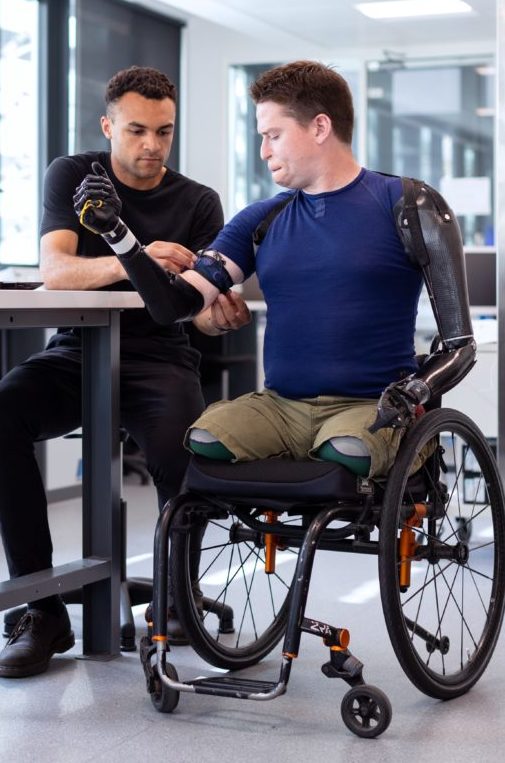HISTORY OF DISABILITY KEYPOINTS:
- Early perceptions of disability in Colonial America
- The rise of disability advocacy
- The disability rights movement
- Rehabilitation and the ADA
- Independant living
- Inclusion

The History of Disability in America
A Journey of disability resilience
The history of disability in America is a testament to the resilience and determination of individuals. Many Americans have faced numerous challenges, societal attitudes, and legal barriers throughout the centuries. From colonial times to the present day, the disabled community has fought for recognition, equal rights, and opportunities to lead fulfilling lives. This article aims to shed light on the significant milestones, struggles, and achievements that have shaped the history of the disabled in America.
Early Perceptions of disability and Colonial America
During the colonial era, individuals with disabilities were often regarded as burdensome. Some were even accussed of being possessed by evil spirits. They faced severe social stigmatization and were often confined to almshouses or institutions. However, some limited efforts were made to provide care and support. In particular, care for disabled veterans of the American Revolutionary War became a starting point.
The Rise of Disability Advocacy
The mid-19th century marked a turning point for the disabled community in America. Pioneering figures such as Doctors Samuel Gridley Howe and Samuel Cartwright advocated for the rights and education of the disabled. Dr. Howe established the Perkins School for the Blind in 1829. Additionally, Dr. Cartwright made significant contributions to understanding mental disabilities.
The Disability Rights Movement
The early 20th century witnessed the emergence of grassroots movements advocating for the rights and inclusion of people with disabilities. The establishment of advocacy organizations such as the National Federation of the Blind (NFB) in 1940 and the Easterseals in 1919 played a crucial role in raising awareness. Ultimately both worked towards equal rights for the disabled.
Rehabilitation and the Americans with Disabilities Act (ADA)
The mid-20th century saw the development of rehabilitation programs and the establishment of the Social Security Disability Insurance (SSDI). Established in 1956, these initiatives aimed to provide financial support and vocational training for disabled individuals. However, it was not until 1990 that a groundbreaking legislation, the Americans with Disabilities Act (ADA), was enacted. The ADA prohibited discrimination against individuals with disabilities in various aspects of public life. Discrimination related to employment, transportation, and accessibility was prohibited.
Shifting Paradigms: Independent Living and Assistive Technologies:
In recent decades, the disabled community has witnessed a paradigm shift towards promoting independent living and leveraging assistive technologies. Innovations such as motorized wheelchairs, screen readers, and voice-activated devices have opened up new avenues for disabled individuals. Many are now able to navigate the world more independently and participate fully in society.
Intersectionality and Inclusion of disability
The history of the disabled in America has also highlighted the importance of recognizing convergance and the diverse experiences within the disabled community. Disability intersects with other identities, such as race, gender, and socioeconomic status. This leads to unique challenges and barriers. Advocacy groups and activists have emphasized the need for inclusive policies and converging perspectives to address the specific needs of marginalized, disabled individuals.
Conclusion
In conclusion, the history of the disabled in America is a story of resilience, progress, and the ongoing struggle for equal rights and opportunities. From the early days of stigmatization and institutionalization to the passage of landmark legislation such as the ADA, disabled individuals and their advocates have fought tirelessly to challenge societal perceptions and create a more inclusive society.
As we move forward, it is crucial to continue working towards dismantling barriers, promoting accessibility, and fostering a society where disabled individuals can thrive, achieve their potential, and contribute to the social fabric. Ultimately, the history of the disabled in America serves as a reminder that disability is not a limitation but rather a characteristic that should be embraced and accommodated.
While significant strides have been made, there is still much work to be done to ensure full inclusion and accessibility for all individuals with disabilities. It is essential to continue advocating for equal access to education, employment opportunities, healthcare, and community participation. By fostering a culture of empathy, understanding, and support, we can create a society that celebrates the diverse abilities and contributions of every individual.
As we reflect on the history of the disabled in America, let us be inspired by the resilience and determination of those who have paved the way for progress. Let us continue the journey towards a more inclusive and equitable society, where the rights and aspirations of disabled individuals are fully realized. In doing so, we will not only honor their legacy but also create a brighter future for generations to come.